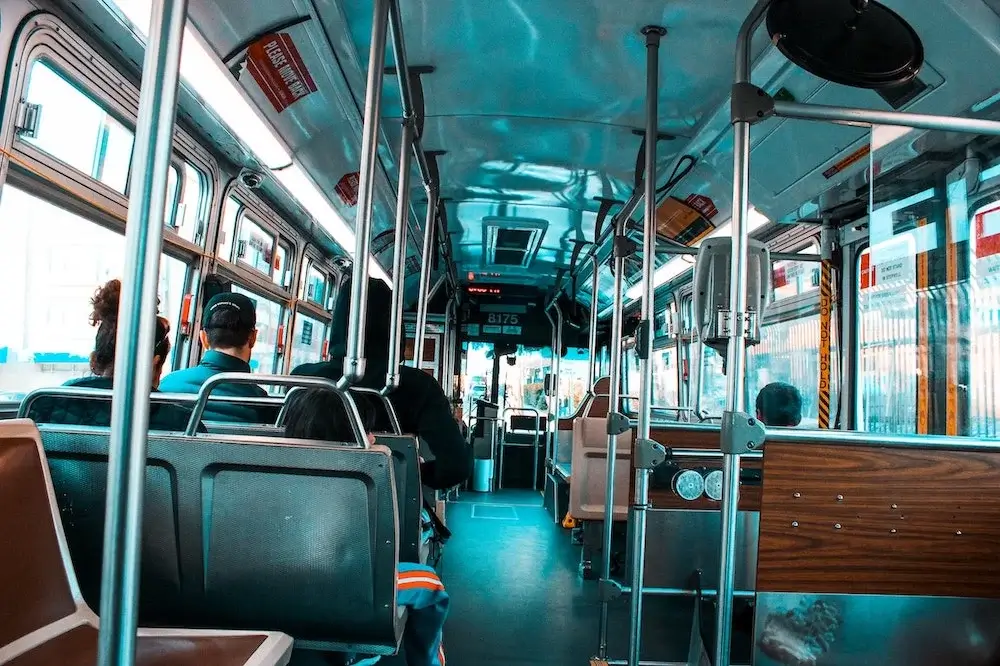According to the Federal Motor Carrier Safety Administration’s latest data, there were 46 school buses, 86 transit buses, and nine intercity buses involved in fatal accidents in the United States in 2020.
That year, an estimated 160,000 people were injured in both large truck and bus crashes. While these numbers are improvements from the previous year, bus accidents are still relatively common and can have tragic results.
Bus accident victims can suffer serious injuries that cause expensive medical bills, long recovery times, missed work, and financial and mental stress. If you or a loved one was hurt in a Dallas bus crash, a Dallas bus accident lawyer with Shamieh Law can help you claim compensation for your losses and fight for the support you need to get back on your feet.
Our personal injury attorneys serve the great city of Dallas from our office, conveniently located at 2612 Thomas Ave, Dallas, TX 75204. Contact us today for a free and confidential case review by calling (469) 813-7332.
Why Work With Shamieh Law’s Bus Accident Attorneys in Dallas
At Shamieh Law, we focus on exceptional client service and delivering results for the people we represent. We use the unique approach of “winning with awareness,” meaning we apply purpose and empathy to everything we do throughout your case.
Our compassionate team is dedicated to treating others with respect and dignity, including our clients, colleagues, and others involved in the process. This commitment has helped us create lasting bonds in the industry that greatly contribute to our success.
We also are a deeply caring law firm and treat every client like family. We fight and advocate for our clients with the same passion and vigor as we would for our own loved ones. With a strong work ethic and commitment to justice, we take immense pride in helping victims get the care and compensation they need.
Schedule your free consultation today to see how we can fight for your rights after a Dallas bus accident.

Case Results
We use proven legal strategies and negotiation skills to fight for the settlements our clients deserve after an accident. With extensive experience representing injury victims in Dallas and throughout Texas, we have secured more than $100 million in verdicts and settlements, including $500,000 for a client who suffered a traumatic brain injury and eye injury when an 18-wheeler truck sideswiped the bus they were riding.
Types of Bus Accidents in Dallas
Because Dallas is a vibrant metropolitan area and popular tourist destination, and has many different types of buses in the roads, including:
- Greyhound bus accidents
- Megabus accidents
- Dallas Area Rapid Transit accidents
- Turimex International bus accidents
- Tornado bus accidents
- School bus accidents
- Charter bus accidents
- Party bus accidents
- Tourist bus accidents
Depending on the severity of these crashes, buses could roll over, collide with other vehicles or pedestrians, or cause property damage.
Common Causes of Dallas Bus Accidents
While several factors can increase the risk of a bus accident, there are common causes of a crash, including:
- Driver negligence
- Heavy traffic or congestion
- Poor road conditions
- Construction zones with poor signage
- Defective parts or equipment
- Unbalanced weight distribution of passengers on the bus
- Lack of passenger safety measures
Common Injuries in Dallas Bus Accidents
Unfortunately, most buses do not have seatbelts or other measures to protect passengers. Because of this shortcoming, bus crash victims often suffer catastrophic injuries and long-term damage that can significantly affect their lives. Even a minor fender bender can cause serious injuries because riders are unrestrained while sitting or standing in the bus.
Examples of common bus accident injuries include the following:
- Traumatic brain injuries
- Whiplash and other neck injuries
- Spinal cord injuries
- Broken bones
- Lacerations
- Bruises
- Burns
In addition, victims may experience anxiety and post-traumatic stress disorder from the crash. These injuries can spawn long hospital stays, lost time at work or with family members, painful recoveries, and financial struggles.
Compensation in Dallas Bus Accident Cases
If you or a family member suffered injuries and other losses after a Dallas bus accident, you may qualify to recover damages. You could claim compensation for the following:
- Current and future medical expenses
- Lost wages
- Loss of future earnings capacity
- Property damage
- Pain and suffering
- Emotional distress
- Permanent disability
- Disfigurement
- Loss of enjoyment of life
If the bus driver or bus company is at fault for your accident, their insurance adjusters will try to pay you as little as possible for your claim. Before accepting any offer, speak with an experienced Dallas bus accident attorney at Shamieh Law to ensure your rights are protected.
Who Can Be Held Liable in a Bus Accident?
Multiple parties may share fault for the bus accident and your resulting injuries. By conducting a thorough crash investigation, our team can determine fault and work to hold one or more of the following parties liable for your damages:
- The bus driver
- The bus company or owner
- Municipalities or government agencies that maintain the roads
- Bus maintenance provider
- Bus equipment or parts manufacturer
- Other drivers on the road
Although it’s easy to point the finger at the bus driver, other parties may have contributed to the crash. For example, a negligent maintenance crew may have failed to notice a brake problem. As a result, the bus could not stop and collided with another vehicle. Likewise, a manufacturer may have designed a faulty engine part that caused an electrical issue and accident.
Our Dallas bus accident lawyers can evaluate your case to determine fault for your accident. Contact us now to schedule your free consultation with our team.
How Do Texas Negligence Laws Impact Bus Accident Lawsuits?
Texas negligence laws could affect how much you receive for your bus accident case. Texas has a modified comparative negligence law for personal injury claims, including bus crash lawsuits. Under this law, you can claim compensation for their damages if you are 50 percent or less at fault for the accident. However, the amount you receive is reduced by the percentage of fault assigned to you.
Insurance adjusters may try to blame you so they pay less for your bus accident claim. Contact a skilled bus accident attorney at Shamieh Law to help you fight back against unfair insurance companies.
How Long Do You Have to File a Bus Accident Lawsuit in Dallas?
Under Texas law, you only have two years from the bus accident date to take legal action and claim compensation for your losses. While there are some exceptions to this rule, you will forfeit your right to recover damages if you don’t timely file your claim. Don’t miss your chance to pursue a claim for the financial support you need after a bus accident. Contact us now to get started on your case.
Steps To Take After a Bus Accident in Dallas
We know a Dallas bus accident can be a traumatic and painful experience. However, the following are important steps you can take to get medical care and secure evidence that could affect a future claim for compensation:
- Stay calm and assess the situation. If possible, go to a safe location away from moving traffic.
- Call 911 for immediate medical care and police assistance.
- Do your best to take pictures and gather other crucial evidence from the accident scene, including witness information.
- Follow all medical advice and document your recovery process.
- Contact an experienced Dallas bus accident lawyer before speaking with insurance companies or other parties.
How Can a Bus Accident Lawyer Help?
Our award-winning Dallas bus accident attorneys at Shamieh Law can help you and your family pursue justice. We have the skills and resources to conduct full investigations, determine fault, build a solid case, and hold the responsible party accountable for your losses. We will handle all settlement negotiations with the insurance companies and every legal step throughout the claims process on your behalf.
If you need a trusted legal team in Dallas after a bus crash, call or contact our team to schedule your free and confidential case evaluation today.
Frequently Asked Questions
- Dallas Car Accidents
- Dallas Truck Accidents
- Dallas Motorcycle Accidents
- Dallas Pedestrian Accidents
- Dallas Bus Accidents
- Dallas Train Accidents
- Dallas Slip and Fall Accidents
- Dallas Dog Bite Lawyer
- Dallas Workplace Accidents
- Dallas Construction Accidents
- Dallas Industrial Accidents
- Dallas Product Liability
- Dallas Wrongful Death Accidents






